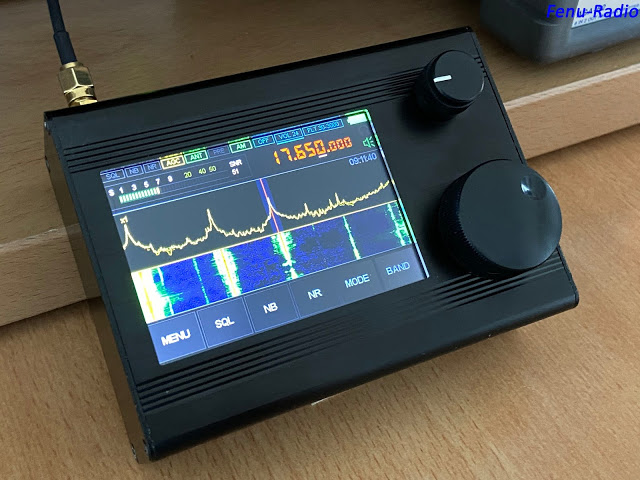Many thanks to SWLing Post contributor, Dan Robinson, who provides this update to his article on the Belka DSP receiver. Dan writes:
One of the other DSP radios shown being demonstrated on YouTube is this one by Georgy Yatsuk, presumably from somewhere in Russia. In his comments posted on January 14th, Fernando Duarte who runs the FENU site says:
“This little gem makes a name for itself. Everyone wants it. But it is still difficult to get. Georgy Yatsuk (RX9CIM) developed this small portable SDR with two of his colleagues. What this little guy offers is simply phenomenal! -Frequency range: 50KHz-2GHz -All important types of operation -160KHz wide waterfall & spectrum display zoomable -Noise reduction adjustable -Noiseblanker adjustable -Equalizer for adjusting the timbre – Controllable via PC -Control via CAT -etc, etc … Because the firmware is still in full development, certain functions will definitely be added. A test and a detailed presentation will be available on my website in the near future. Stay tuned !!”
https://fenuradio.blogspot.com/2020/01/malachit-dsp-der-edelstein-aus-russland.html
As of this moment there is no additional information as to whether this seemingly excellent receiver will ever become available and in what numbers.
Many thanks for this update, Dan! We published a post about the Malahit-DSP in November on a tip from H. Garcia (PU3HAG). I have put in an inquiry to purchase one to evaluate here on the SWLing Post as well. This does look like a fascinating portable SDR!
Do you enjoy the SWLing Post?
Please consider supporting us via Patreon or our Coffee Fund!
Your support makes articles like this one possible. Thank you!



Just FYI, he authors published a post that they have not put up any units publicly for sale and if you see such ads they could very likely be a scam. They do have a legitimate email address for contacts and that is probably the only true source of information as to where this project is.
O yesssss !
Nobody says that there is nothing serious to hear anymore.
http://rus-sdr.ru/ru/about/
Russia is also trialing DRM in the 47 – 68 MHz band. This receiver should get the software to decode DRM
The STM32H743VIT6 it uses is a pretty powerful Cortex M7 chip with built-in DSP core – but I don’t think it’s quite powerful enough to be doing everything it’s already doing in there + DRM without additional external hardware support.
It wouldn’t be too far off though – IIRC, one of ST Micro’s original aims with their M7 + DSP chips was support stand-alone DRM decoding – so there may be some novel solution I’m not seeing.
To me, a true “Holy Grail” SDR doesn’t just mean great sensitivity with minimal internally-generated RFI, with a tuning range between 50kHz-2GHz, AM, FM, NFM, synchronous AM, I/Q, FM stereo, decoding of RTTY, Morse, RDS and WEFAX, all in a standalone module. There are several of these out there, like the Malachite (proper translated name for this unit), Malamute, Alfedri LAN-IQ, and so forth.
A true “Holy Grail” is all this !plus! user-accessable customisable expansion using open SDR platforms and SDKs like GNUradio and SoapySDR modules, particularly for the decoding of systems like DRM, DAB+, NRSC-5 and amateur radio digital voice modes, as well as subcarrier audio on broadcast FM, and so forth, all within a standalone box, ideally with a speaker.
SDR has always been about being a digital “Swiss Army knife” approach to radio reception, and bringing radio into the Third Millennium. There should always be room to expand and explore new modes and systems, providing a means to do so.
The Titus II was supposed to be this, as its system was based on using SoapySDR modules.
I’m no good at building one, but all I ask is a standalone SDR receiver with an open development platform, and I’m happy.